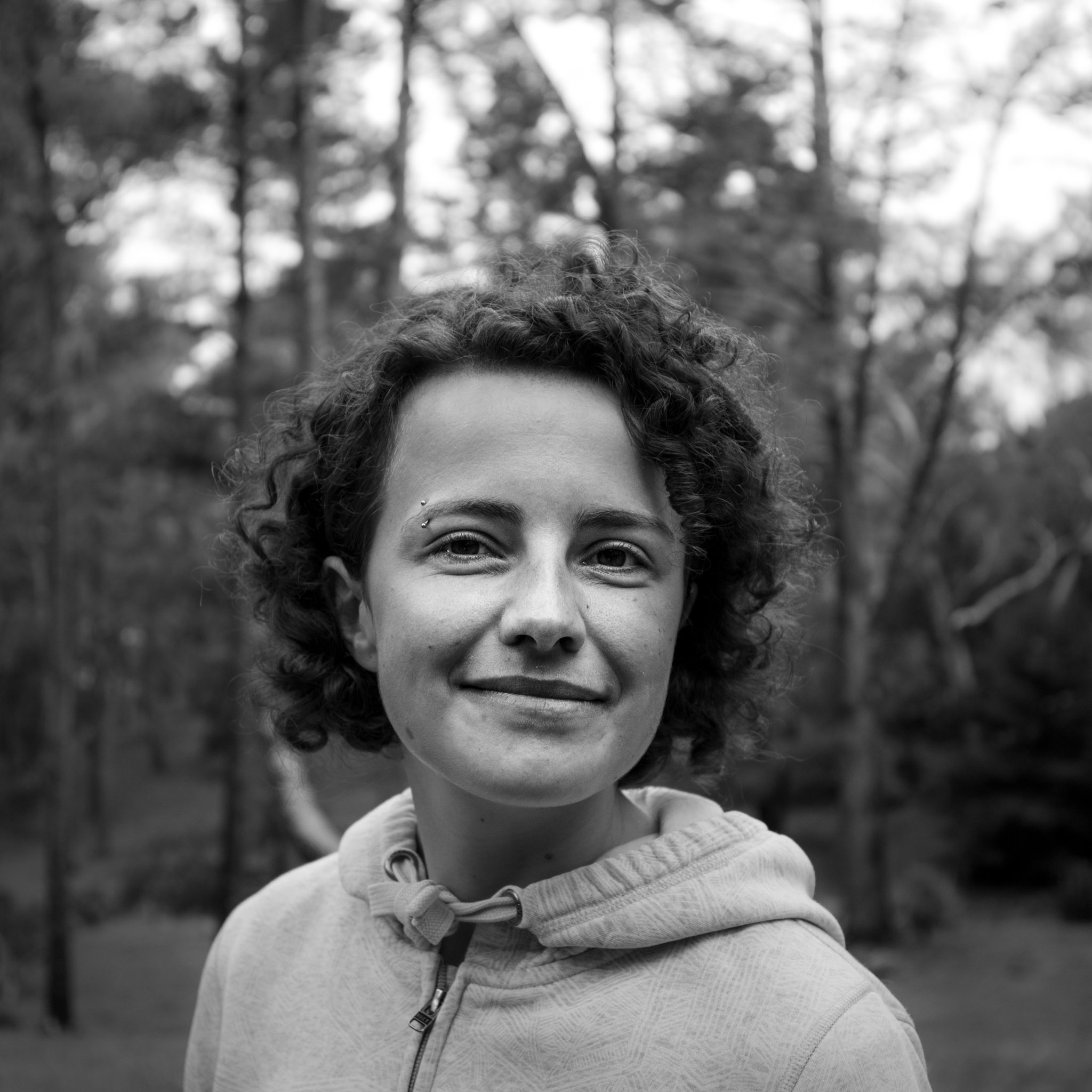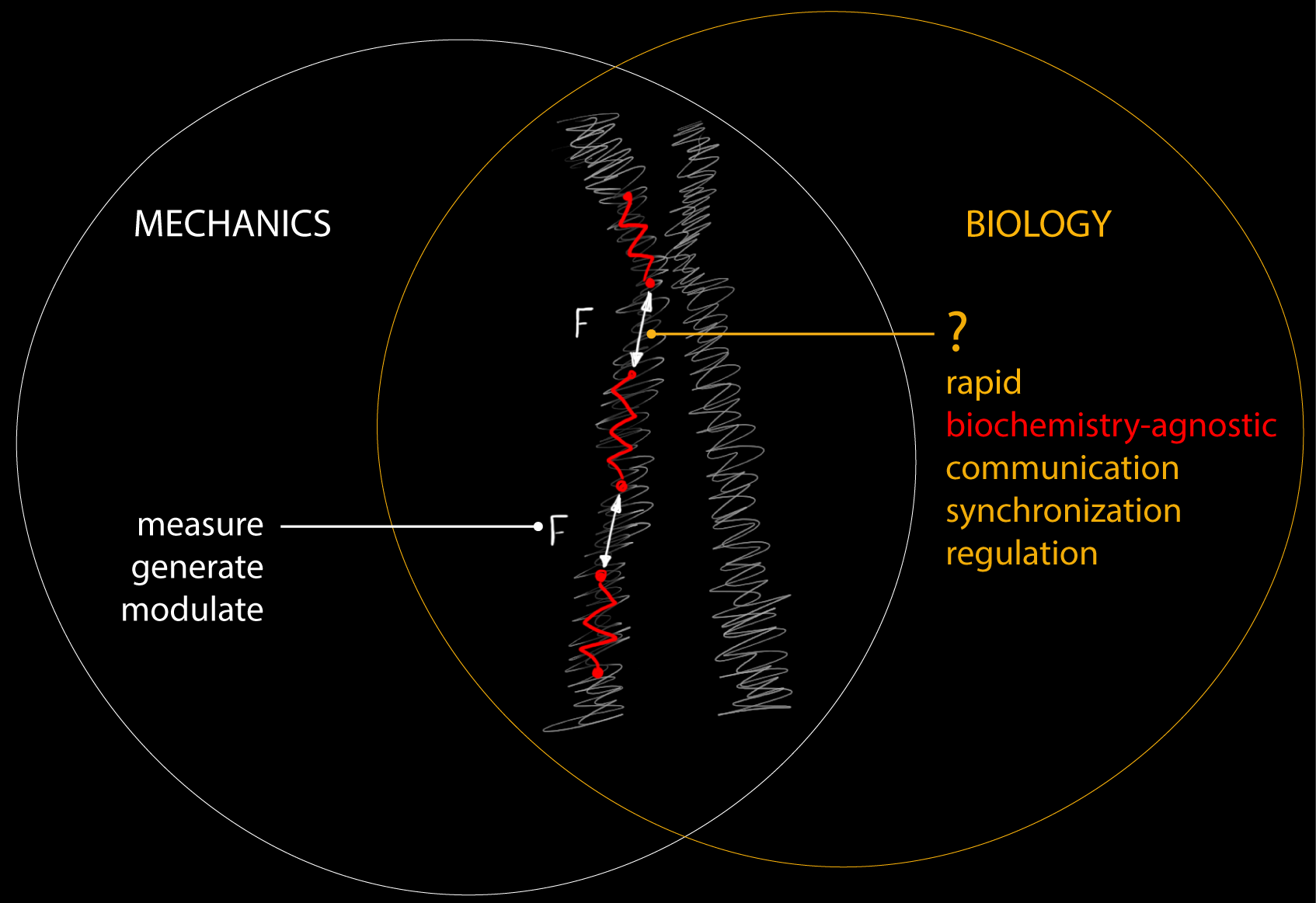Maria Mukhina hopes to shine a new light on how the intricate machinery of life works at its most fundamental level.
With a background in physics, optics and nanotechnology, the assistant professor of physics who joined the University of Maryland in January 2024 studies how cells use mechanical energy to organize themselves and carry out their jobs—both when they’re healthy and when they’re not. Mukhina develops nanoscale tools to visualize and quantify the mechanical forces within cell nuclei. Her work focuses on the mechanical information processing in DNA and chromosomes, which could lead to a better understanding of gene expression, disease mechanisms and how complex structures like tissues form.  Maria Mukhina
Maria Mukhina
“Physics is just as important for controlling cell physiology as chemicals and genes,” Mukhina explained. “Yet, we know very little about the mechanics that emerge when millions of molecules come together in larger dynamic structures like the genome or cytoskeleton. This is due to the lack of appropriate tools that would allow us to read out the properties of these mechanics—and that is where my work comes in.”
Physics Chair Steven Rolston said Mukhina’s research will provide UMD students with new perspectives on how physics can be applied to many other disciplines, from biology to materials science.
“Dr. Mukhina’s training in the optical physics of nanocrystals gives her unique insights in applying techniques based in physics to study genome mechanobiology—the interplay of mechanical forces with biological function,” Rolston said. “We are delighted to have her join our biological physics effort in the department.”
Using tiny tools to solve big mysteries
Growing up in Russia, Mukhina had no idea she would eventually pursue an academic career in physics. Raised in a family of musicians, engineers and doctors, she had no lab or research experience until she entered ITMO University in St. Petersburg as an undergraduate studying laser physics.
“I was in third year of my undergraduate education when I finally realized that I could be working in a research lab looking for answers to a real scientific question,” she recalled. “Ever since then, I’ve been in love with experimental work in the lab. Nothing can compare with sitting there in the dark, doing some microscopy work and knowing something that no one else under the sun knows—it’s like pure magic!”
Mukhina brought that sense of wonder to her graduate studies at ITMO University, earning a master’s degree in photonics and optical computer science and a Ph.D. in optics. Her doctoral research focused on the new optical properties arising in spatially ordered ensembles of anisotropic nanocrystals, tiny semiconductor particles with unique properties that can be controlled by changing the size and shape of a nanocrystal.
After that, Mukhina wanted to explore more biological applications for this rapidly evolving technology, so she joined the lab of Harvard University cell biologist Nancy Kleckner as a postdoc.
“The Kleckner lab introduced me to the world of cellular mechanics,” Mukhina said. “We viewed chromosomes as mechanical objects rather than carriers of genetic information. This perspective led me to a whole new world of questions about how physical forces can shape the behavior of cells. I was fascinated by the idea that one can use nanotools to do work in a living cell, to change how it performs its functions, and also how this branch of research draws so heavily from physics, cell biology, chemistry and more.”
The interdisciplinary nature of that work led Mukhina to look for research environments that could provide a space for both collaborative research and innovative thinking. She found the perfect new home for her research at UMD.
“I wanted to find a place where I could interact with very diverse faculty and resources,” Mukhina said. “And beyond the university, I am also close to many cutting-edge research hubs like the U.S. National Science Foundation and the National Institutes of Health. I’m very excited to join a group with such varied expertise.”
 Now, Mukhina’s biggest research challenge is to accurately measure nanoscopic forces without disrupting the delicate environment of living cells. Drawing on her background in physics and nanotechnology, she develops tiny probes that can be directly introduced into cells to map out the forces at work within them.
Now, Mukhina’s biggest research challenge is to accurately measure nanoscopic forces without disrupting the delicate environment of living cells. Drawing on her background in physics and nanotechnology, she develops tiny probes that can be directly introduced into cells to map out the forces at work within them.
One probe is based on a concept called “DNA origami”—a technique that uses complementarity of two DNA strands to fold them into specific shapes. Another probe relies on a phenomenon called mechanoluminescence, where mechanical stresses applied to a material cause it to emit light. Both tools are designed to respond to the minute mechanical forces generated by mammalian cells, allowing researchers to create very detailed 4D maps of the intracellular force fields, which, as the researchers hypothesize, are used by the cells to orchestrate changes across microns of space, a huge distance in the cell universe.
“All of this requires very fast and gentle to the cells light microscopy, so I’m also currently building a custom microscopy setup that will allow me to measure fluorescence or mechanoluminescence in events that occur within milliseconds,” Mukhina said.
Mukhina also sees potential long-term applications for her research in medicine and beyond.
“Understanding the mechanics of how cells divide and segregate DNA could provide insights into cancer development or help us learn how to restart regeneration of our heart muscle cells after birth,” she explained. “My goal is for my work to open new avenues into developing regenerative therapies—and to push the boundaries of what we know about these physical forces that shape life itself.”